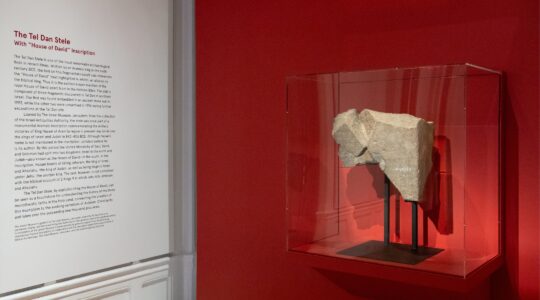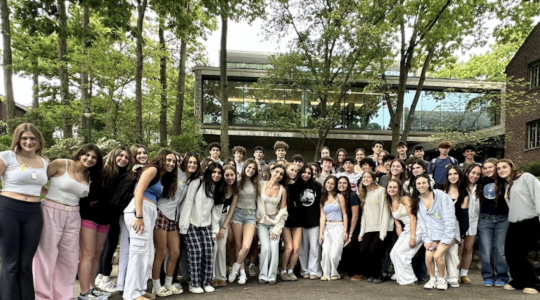If you’re in Berlin over the next few months, you can watch a Sephardic rabbi with black coat and large black kipa at the city’s Jewish Museum writing a Torah scroll.
And you can see an orange robot doing the same thing.
As part of an exhibition, “The Creation of the World: Illuminated Manuscripts from the Braginsky Collection,” which opened last week, the museum is featuring the significance that Hebrew handwriting plays in Judaism. Also on display are wedding contracts and many medieval documents.
But the stars of the exhibition are Rabbi Reuven Yaacobov (an Uzbekistan-born Sephardic scholar who has lived in Berlin since 2001, serving as a mohel, shochet and Torah scribe), and, in a nearby room, the industrial robot developed by the robotlab artists’ group (ecumenical, the robot previously wrote the Christian Bible in German, Spanish and Portuguese).
While the exhibition closes Aug. 3, the robot, reprogrammed with the help of an Israeli graphic designer, will be on display the rest of the year. The robot writes the sefer Torah exactingly slowly, from right to left, 10 hours a day.
A human scribe takes a year or more to complete a scroll.
“While the Sofer [Torah scribe] guarantees the sanctity of the Scripture, the installation highlights its industrial reproducibility,” the website of the Jewish Museum (jmberlin.de) states.
The finished product of the robot, fashioned by a writing arm attached to a small nib, will not be kosher according to traditional Jewish law; it will not be acceptable for use in a synagogue, since it is not being penned by a human hand, and is on a 260-foot-long roll of paper, not on parchment.
The New York Jewish Week brings you the stories behind the headlines, keeping you connected to Jewish life in New York. Help sustain the reporting you trust by donating today.




